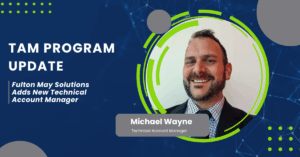Cybercriminals tirelessly look for new ways to breach various security systems to steal sensitive data. However, many of them stick to what they know to be effective, so you should be fully aware of the common threats in the cyber world.
Knowing what threats may be lurking around the corner will help you avoid them and keep your data safe and secure. Here are the most common categories of cybersecurity threats and how to protect yourself against them:
Phishing Scams
Phishing scams involve emails that seem legitimate but contain attachments that either lead to a malicious website or secretly install malware on a user’s device. Either way, when the user clicks through, hackers use tools for recording keystrokes and discovering usernames and passwords, allowing them to easily steal credentials and other sensitive data.
To avoid falling victim to phishing scams, never open an email attachment before absolutely making sure the email came from a verified user.
Malware Attacks
Malware can be a virus, ransomware, or various other types of malicious software. Once it’s in your system, it can be difficult to remove it, especially if you have no idea that it’s there. It can get into your system via a phishing email attachment, a malicious website, a USB stick, an innocent-looking file, or a variety of other ways.
To protect yourself from potential malware attacks, don’t click on suspicious links, especially those in emails from unverified users. Don’t download files using insecure connections, especially if you’re on public Wi-Fi, which usually doesn’t use encryption. Refrain from clicking on anything you’re not sure to be legitimate or plugging unknown USB sticks into your devices.
DoS and DDoS
Denial-of-service (DoS) and distributed denial-of-service attacks are quite common categories of cybersecurity threats. With a DoS attack, a hacker floods a system or website with traffic, preventing it from responding to service requests. Overloading a system or website with more than it can handle makes it shut down for all users.
DDoS attacks also target a network or device to disrupt its services, but it involves multiple systems flooding the resources or bandwidth of the target user. The hacker uses multiple servers at the same time to overwhelm its target, which is why it’s tough to prevent such an attack.
Nevertheless, you can reduce the risk of it happening by leveraging strong cloud-based protection and securing your network infrastructure.
Man-in-the-Middle Attacks
A man-in-the-middle (MITM) attack involves a cybercriminal relaying and altering communications between remote servers and requesting devices.
If a hacker targets you for a MITM attack, they pretend to be the remote server to which you’re trying to send a request. Posing as a trusted source gives them a chance to steal confidential data, as they can intercept information in both directions.
Unfortunately, there’s no single solution for preventing MITM attacks, but you can significantly reduce the risk of an attack using top-notch encryption and digital certificates.
Cross-Site Scripting (XSS)
Cross-site scripting involves cybercriminals injecting malicious lines of code, or scripts, into a website so that they can run the scripts into the users’ browsers when they visit that website. They don’t attack the website itself, but rather go after its users to gain access to their sensitive data, such as credit card details, or usernames and passwords.
While you can’t protect against this kind of a cybersecurity threat as a mere user, developers can. If you’re a developer, or you run a website, you should take steps for validating and filtering all data input in HTML requests before reflecting it back to users. You should also enable your users to disable client-side scripts.
SQL Injection
SQL (Structured Query Language) injection attacks are similar to XSS attacks. SQL is a language used in programming, for managing data in databases.
During a SQL attack, a hacker uses malicious code to get a particular server, which stores data for a website or service that uses SQL, to share sensitive information. They run an SQL command which enables them to read or modify data and ultimately execute various operations on the database or operating system.
To keep your SQL databases safe from potential SQL injection attacks, make sure you apply the principle of least privilege (PoLP) to your databases. Make sure there are no dynamic SQLs and parameterized queries, and that the code you execute on your databases is strong enough to not let potential hackers through.
If you need IT experts to keep your systems and data safe from these and other common categories of cybersecurity threats, Fulton May Solutions is at your disposal. We can assess and maintain your IT infrastructure with managed IT services, and provide you with top-notch cybersecurity.
Contact us today to get a free IT assessment.





